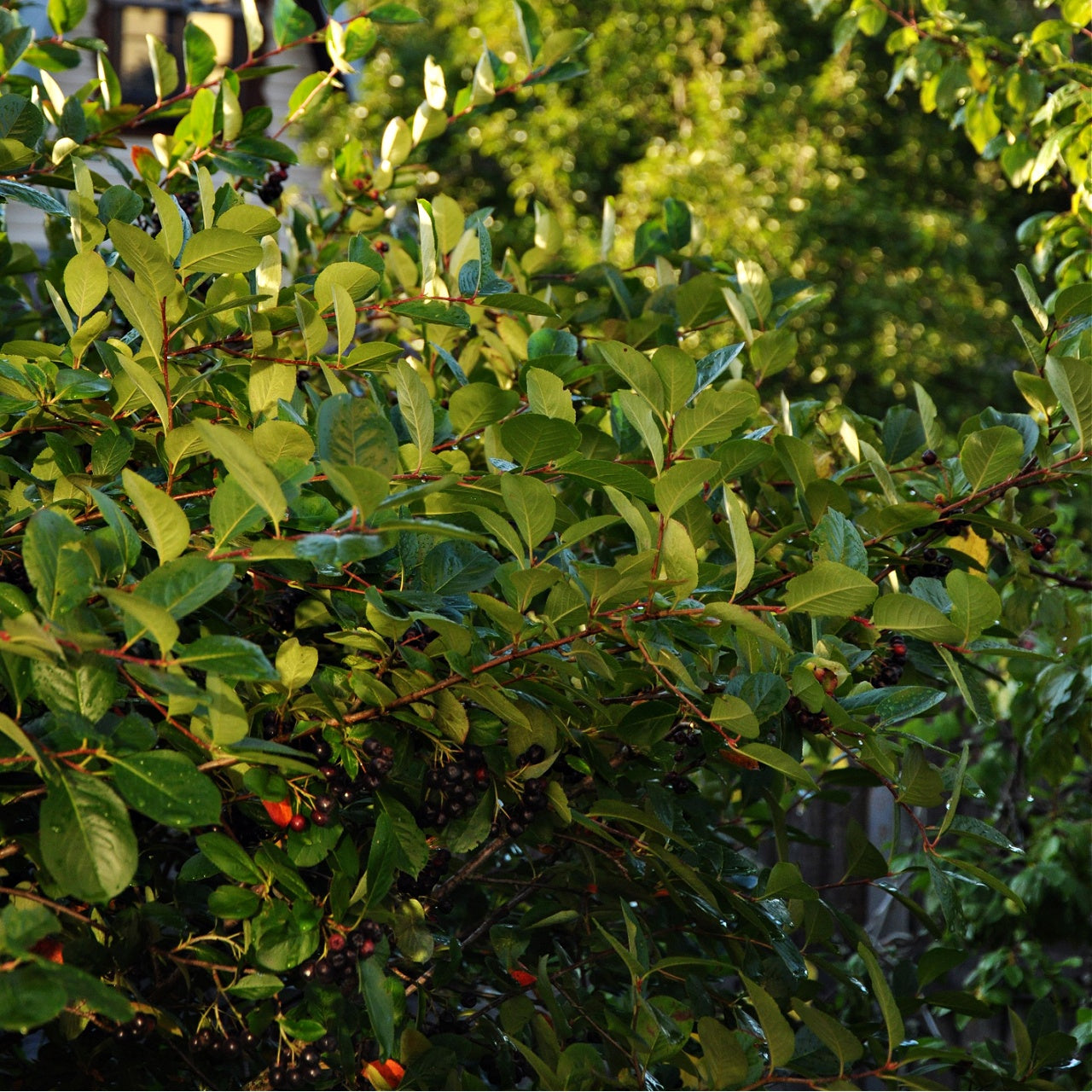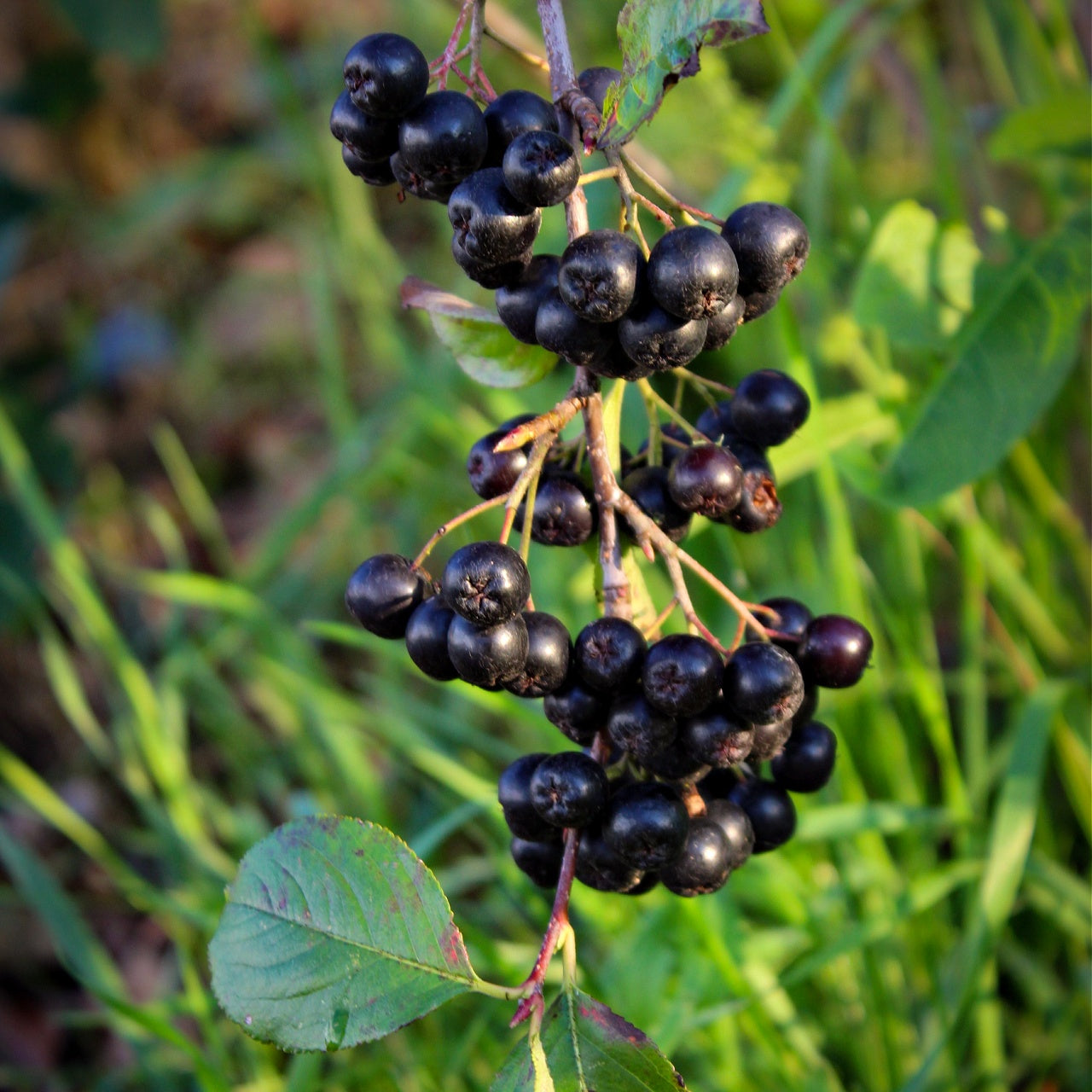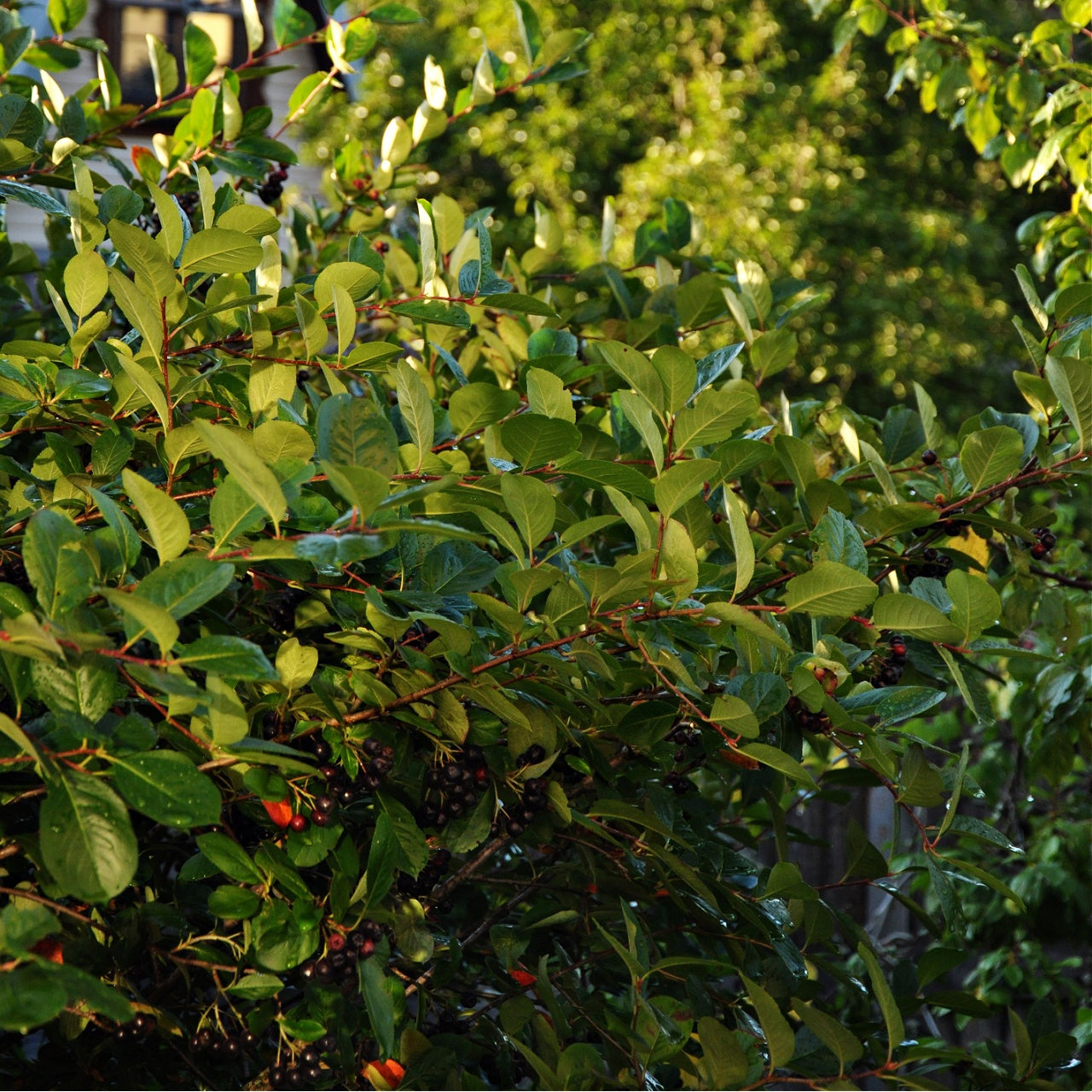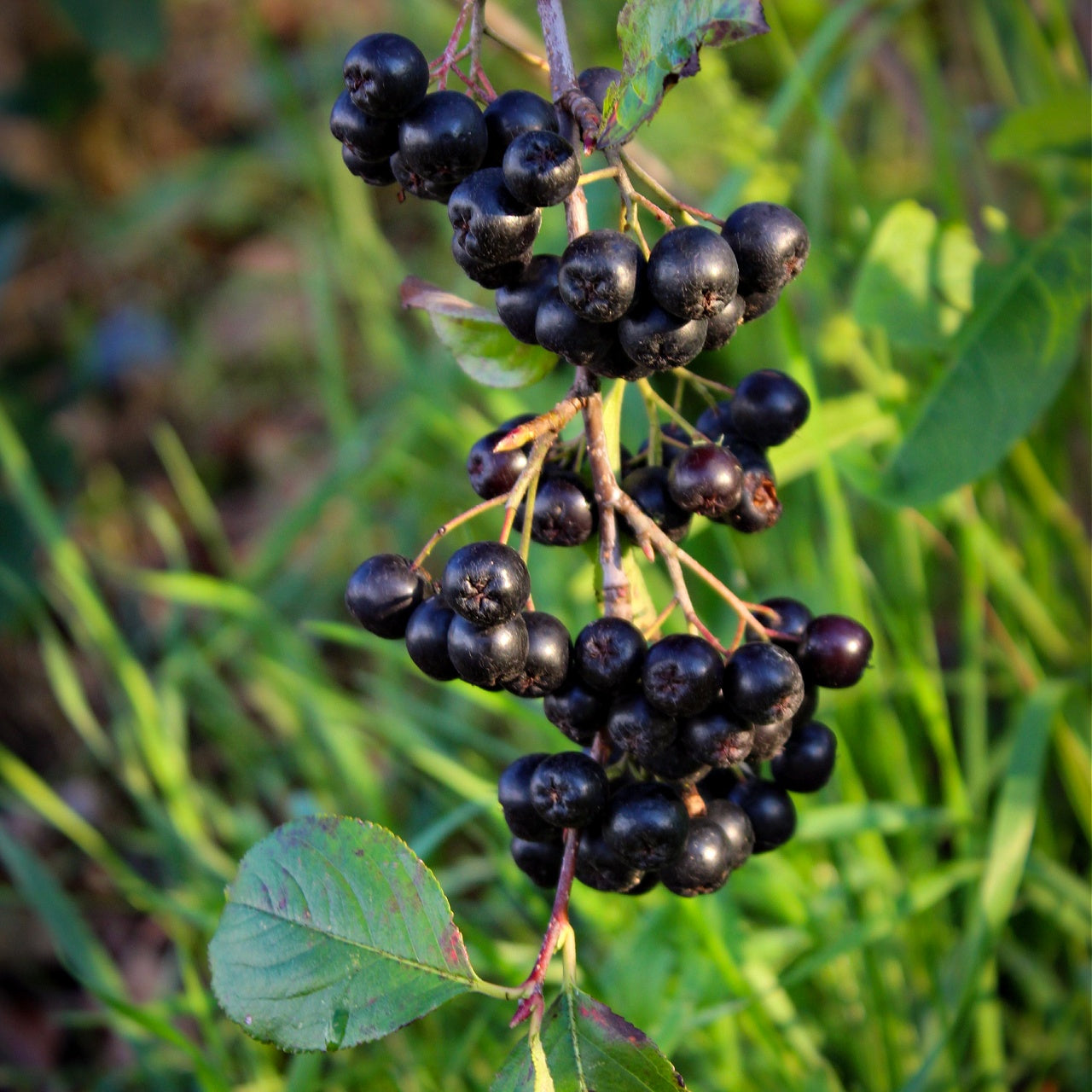Black Chokeberry Shrubs
Black Chokeberry Shrubs
This plant ships:
Ships Week of May 12thCouldn't load pickup availability
Exposure
Sun or ShadeHeight at Maturity
Under 10 FeetUsage
LandscapingShipped As
Bare-rootShips
Ships Week of May 12thPlanting Zones
3-8Black Chokeberry Shrubs
Black Chokeberry Shrubs, or Aronia melanocarpais, is a genus of deciduous shrubs native to eastern North America. It is usually found in swamps and wet woodland areas and is used for ornamental gardening.
Black Chokeberry Is A Medium Size Shrub
Black Chokeberry is small to medium in size. It typically grows two to three feet in height and three to four feet in width. It blooms in the spring, and the flowers are small white clusters that mature into berries.
The flower clusters are two to a half inches wide. The dark green foliage turns a reddish-purple shade in the fall. Leaves alternate and grow from one to three inches in length.
Berries grow to 1/3 to 1/2 of an inch in size and can last into the early winter months. The bark has visible lenticels and is dark brown and very smooth. It is slow-growing and reaches maturity at five years old.
It is a member of the rose family. This perennial grows best in partial shade (up to fifty percent sunlight). It is hard to zone 3 to 8 and tolerates full sun. While it prefers acidic, moist, and swampy soil, it can acclimate itself to tolerate sandy and dry land.
It is easy to maintain; it requires pruning in the spring after blooming, and mulching around the bush is recommended for landscaping.
At three to eight feet high and with a spread of two to six feet, it also can be used to form hedges or to fill in gardens and natural landscapes. Its tendency to produce suckers allows it to spread quickly and aids erosion control. It naturally creates a rounded shape and does not require pruning.
It Is Disease And Pest Resistant
While it prefers full sun, it will grow well in partial shade and is hardy to U.S.D.A. zones three to eight. It is resistant to most diseases and pests. It is also tolerant of salts and compacted clay-like soils. It accepts a wide range of moisture conditions but prefers to avoid being waterlogged for long.
Propagation is typically through suckers but can also occur via seeds. Flowering occurs mid-spring when showy, white, aromatic flowers appear in two- to three-inch clusters. The flowers give way to berries a quarter to a half-inch in size. When ripe, the berries ripen in late summer to early fall and are deep purple.
It Keeps Its Berries Even In The Winter
Total sun exposure enhances berry production. The berries typically remain on these bushes, attracting wildlife throughout winter.
This Bush Is A Stunning Ornamental Shrub
Black Chokeberry shrubs are also a valuable ornament for any landscape. In addition to their beautiful spring flowers, they are resplendent in the fall with vibrant displays of red-orange to purple leaves. When allowed to form a dense group, they provide a valuable windbreak for gardens and shelter for numerous types of wildlife.
Share



I have this in my backyard with double purposes. This fruit bearing shrub is a good source of food for birds and to my household.
This plant shows a distinctive trait in three seasons. I cherish more when it starts to bear fruits since birds shall be hoovering around gracefully.
I have this plant thriving very well for so many years. I never fail to make preserves out from its fruits thus I am feasting everytime it bears fruits.
Nice tall sapling arrived in time for fall planting, kept well moist with lots of gel.
This is a wonderful addition to my flower garden. Looks great where I planted it.



